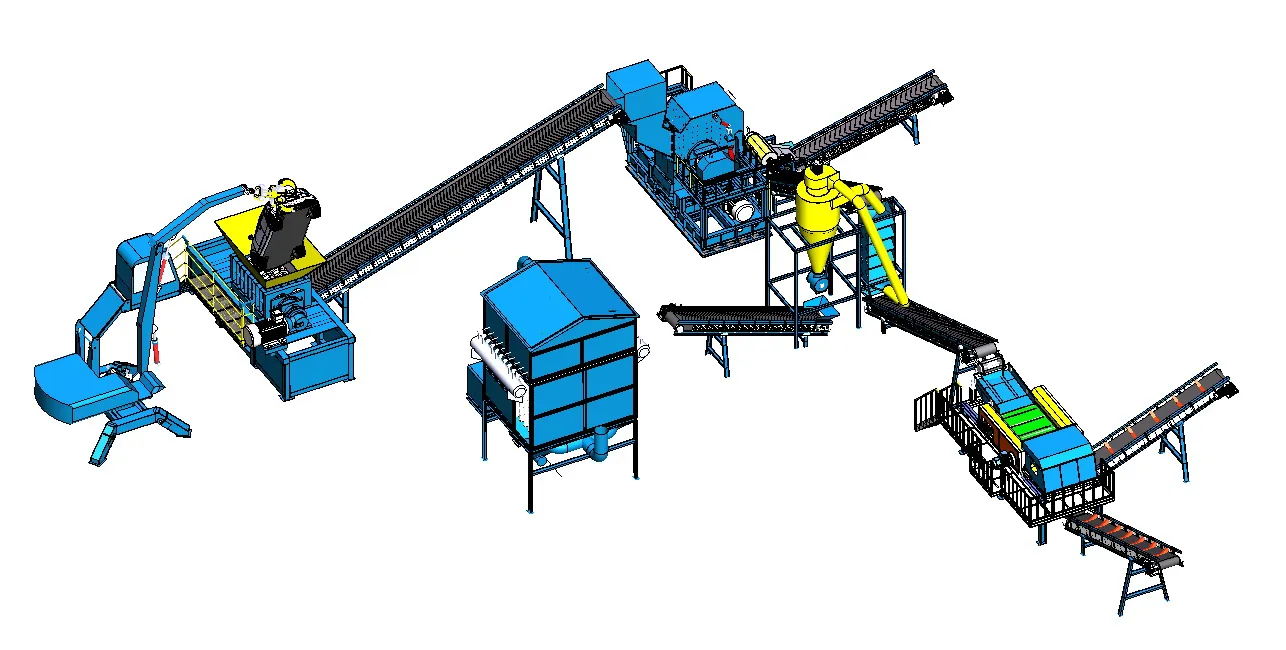

តុលា . 31, 2024 14:43 Back to list
How Are Metals Sorted in Recycling Plants?
Recycling metals is a crucial part of the waste management process, significantly contributing to environmental sustainability and the conservation of natural resources. In recycling plants, the sorting of metals is a sophisticated operation that involves multiple stages and advanced technology to ensure that different types of metals are efficiently separated for reuse.
The sorting process begins when recyclable materials are collected from various sources, such as households, industrial sites, and commercial establishments. Once the materials arrive at the recycling facility, they are first subjected to a thorough manual inspection to remove any non-metal items and contaminants, such as plastic, paper, and organic waste. This preliminary step is essential, as it helps to streamline the sorting process and improves the quality of the recyclables.
After the initial sorting, the bulk materials are fed into a conveyor belt system, where mechanical sorting techniques come into play. One common method utilizes magnetic separation to isolate ferrous metals, which contain iron. Giant magnets are positioned above the conveyor belts, attracting ferrous metals while allowing non-magnetic materials to continue along the conveyor. This method is highly effective for sorting out steel and iron components from the mixed waste stream.

Following magnetic separation, non-ferrous metal sorting is performed using a combination of techniques, including eddy current separation and advanced sensor technologies. Eddy current separators utilize powerful magnetic fields to repel non-ferrous metals, such as aluminum and copper, allowing them to be collected separately. Meanwhile, optical sensors and X-ray fluorescence (XRF) analyzers can identify metal types based on their unique properties and chemical compositions. These technologies ensure that different grades of non-ferrous metals are accurately sorted, making recycling processes more efficient.
The sorted metals are then compacted into bales and prepared for shipment to various processing facilities. Each type of metal undergoes different recycling processes based on its composition and intended use. For example, aluminum can be melted down and reformed into new products with significant energy savings, while copper is frequently reused in electrical applications due to its conductivity.
In conclusion, the sorting of metals in recycling plants is a multi-faceted process that combines manual labor with advanced technology. From initial inspections to the implementation of sophisticated machinery, each step plays a vital role in ensuring that metals are effectively separated, recycled, and reintegrated into the supply chain. By enhancing the efficiency of metal sorting, recycling plants contribute significantly to reducing waste and promoting a sustainable future.
Latest news
Troubleshooting Common Eddy Separator Problems
NewsJul.04,2025
The Role of Metal Recycling Plants in Circular Economy
NewsJul.04,2025
The Impact of Recycling Line Pickers on Waste Management Costs
NewsJul.04,2025
Safety Features Every Metal Shredder Should Have
NewsJul.04,2025
How Industrial Shredders Improve Waste Management Systems
NewsJul.04,2025
How Cable Granulators Contribute to Sustainable Recycling
NewsJul.04,2025